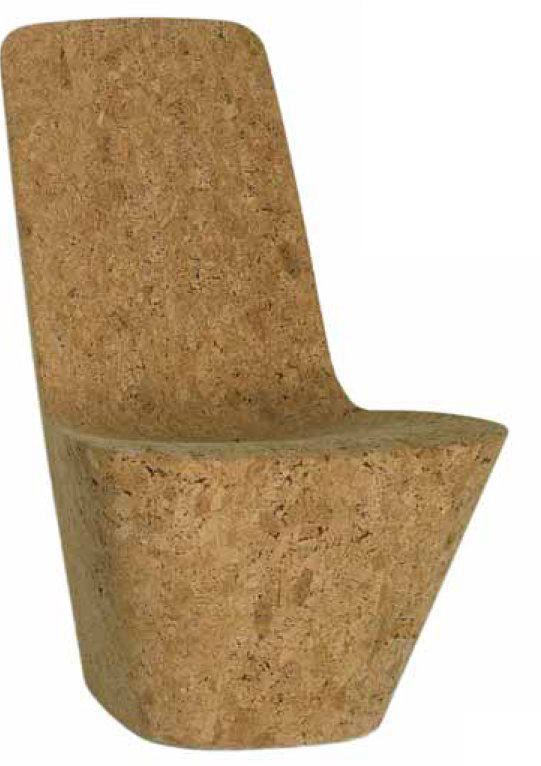When science fiction writers of the 1960s envisaged the future they probably didn’t bargain on cork, which is extracted from bark and has been used for thousands of years, still occupying a strong position as a high-tech material in the early part of the twentyfirst century. Incredibly, this tree peel has been used in space shuttles due to its thermal insulation properties; it protects the fuel tanks on re-entry into the Earth’s atmosphere, a function that is the result of 1 cm (⅜ in) of cork containing 40,000,000 cells of air.
In our intensive investigation and our ingenuity in forming new materials we are ultimately attempting to emulate nature. Cork is one of the many natural and rapidly renewable resources that have become prominent in the world of ‘new materials’. It is also a material that, depending on where it is used, has many associations. For example, cork products might bring to mind English garden fêtes and Christmas bazaars; these festivals of community making often feature place mats and pin boards and other traditional cork products. But if we examine cork without any of its traditional associations we see it for what it is, a material that is renewable, natural, very light and impermeable to water. A material that feels like a chewable, warm, dense natural sponge, and one of the few materials that has Poisson ratio of 0, which in simple terms means that it does not get thinner when stretched, unlike most other springy materials.
Image: Jasper Morrison cork furniture for Vitra

Key features
•Poisson ratio of 0
•Renewable
•Biodegradable
•Elastic
•Vibration dampening
•Shock dampening
•Impermeable to liquids
•Impermeable to gases
•Good heat insulation
Sources
Portugal is one of the world’s biggest exporters of cork and accounts for 60% of the world’s production, producing over 300,000 tonnes a year. Spain, Algeria and Morocco are also large producers.
Cost
Relatively inexpensive.
Sustainability issues
Cork trees absorb up to five times more CO2 than other trees, while producing a new harvest of cork bark every nine years. Each mature cork tree produces enough cork bark to make 4,000 bottle stoppers every nine years. The harvesting of cork takes place in the summer when the bark expands and naturally comes away from the inner layer of the tree.
Production
In terms of production, cork can be machined, routed, lathe-worked, cut using similar techniques to woodworking, and can be formed using a process similar to compression-moulding plastics. It can be turned into a sheet, woven as a textile and even combined with other flecks of different types of cork to make a decorative composite.
As the Portuguese cork industry suffers as a result of corks in wine bottles being replaced with screw tops, the industry has looked to other areas of application. Apart from place mats and craft-fair archetypes, cork is also used for dartboards, shoe liners, anti-vibration pads, handles for sporting goods such as fishing rods, floats and, of course, contemporary furniture. One of the biggest areas of application is in cork fabrics, which offer a huge range of colours, effects and finishes, that are being used in fashion accessories like handbags and even as an upholstery material. It has even been used as a postage stamp in Portugal. One of the interesting qualities of cork trees is their ability to withstand fires; as a result they are planted to act as fire barriers.
| + | – |
|
–Versatile –Good strength-to-weight ratio –Water resistant –Biodegradable |
–Can suffer from dated, cut-price associations |
